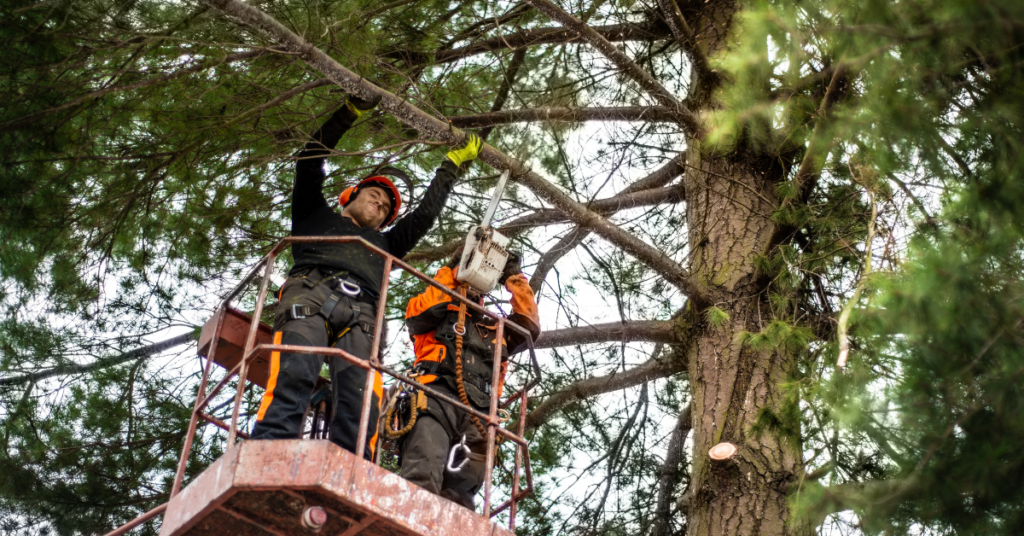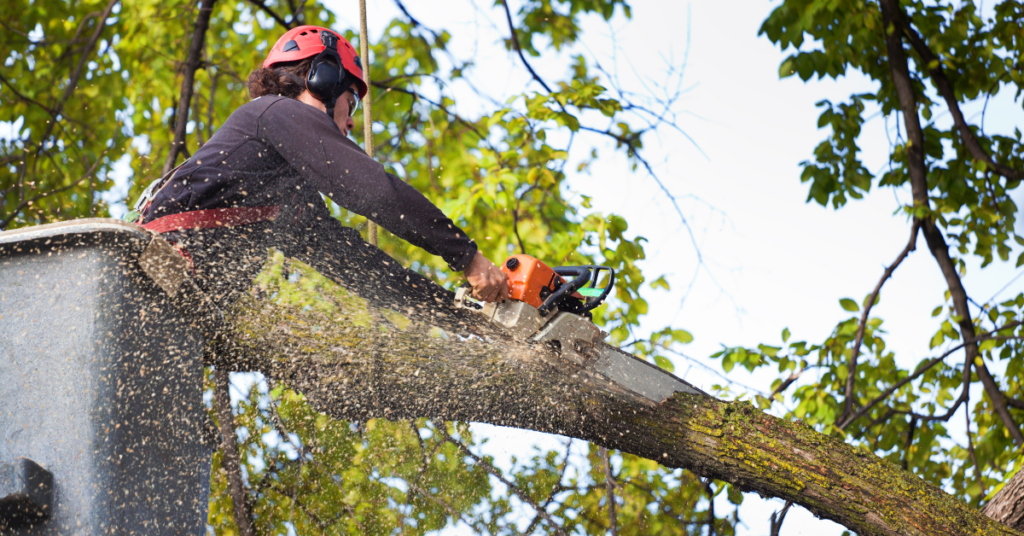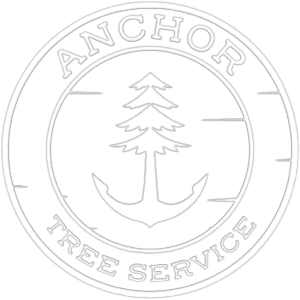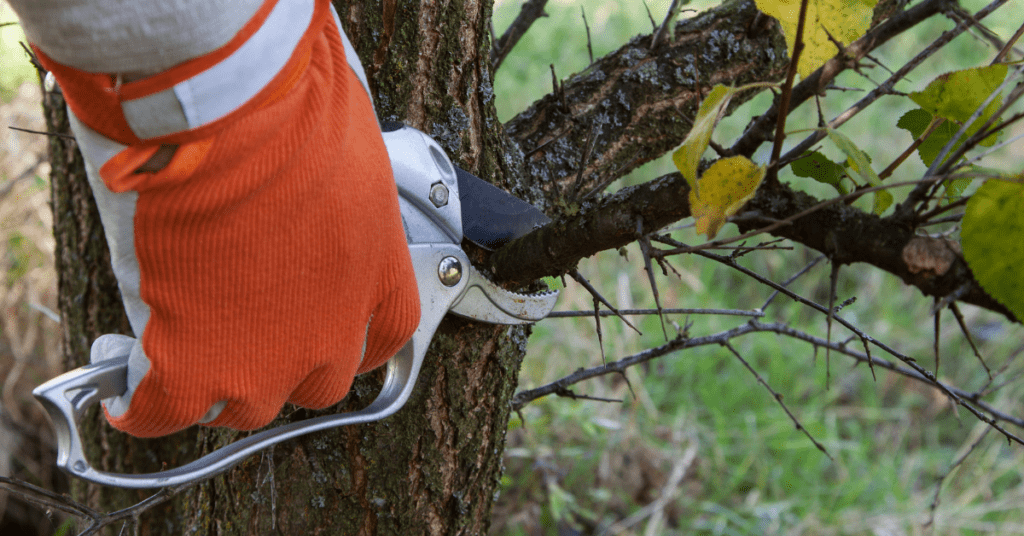For homeowners and property managers, understanding the ins and outs of tree maintenance can often be an uphill task. Two commonly used methods are spiral pruning and canopy lifting, aimed at preserving our trees and making our properties safer and more aesthetically pleasing. But what exactly are these techniques, and could they potentially harm your trees?
Potential Risks Associated with Spiral Pruning and Canopy Lifting
Spiral pruning and canopy lifting are two distinct arboricultural techniques employed to manage and shape the growth of trees. While these practices can be beneficial, they are not without risks. Spiral pruning involves the selective removal of branches and foliage in a spiral pattern around the tree’s trunk preventing the tree from becoming too dense. If overdone or unevenly applied, it can lead to an imbalance in the tree’s structure, making it vulnerable to breakage or toppling in strong winds. Moreover, incorrect cuts can expose the tree to diseases or pest infestations.

In contrast, canopy lifting focuses on removing the lower branches of a tree to elevate its canopy. When taken to extremes, it can deprive the tree of essential foliage needed for photosynthesis, leading to reduced vitality. Removing too many lower branches can also shift the tree’s center of gravity upwards, potentially making it less stable.
In both cases, poorly executed cuts can lead to prolonged healing times, creating entry points for pathogens. It’s essential that such pruning techniques be carried out by professionals like Anchor Tree Service that have the knowledge and precision to avoid jeopardizing the tree’s health and stability.
Advantages of Spiral Pruning and Canopy Lifting
Despite potential risks, proper execution of these techniques can offer immense benefits to the tree and the tree owner. Spiral pruning and canopy lifting, when executed properly, offer a range of advantages for both the tree and its surroundings. Spiral pruning promotes better airflow and sunlight penetration throughout the tree, which can enhance photosynthesis and reduce the likelihood of fungal diseases thriving in damp, shaded conditions. By decreasing the tree’s wind resistance, it also minimizes the potential for storm-related damage.
Canopy lifting, on the other hand, is beneficial in urban and suburban environments. By elevating the tree’s lower canopy, it provides clearer pathways for pedestrians and vehicles, reduces the risk of obstruction or damage to nearby structures, and can even improve sightlines for traffic. Moreover, both techniques can accentuate the tree’s natural form, contributing to the aesthetic value of a landscape.

Ideal Timing for Pruning and Lifting
The ideal timing for spiral pruning and canopy lifting is largely contingent upon the tree species and the specific objectives of the pruning. In general, late winter to early spring, just before the tree breaks dormancy, is a favorable time. At this juncture, the tree’s sap flow is minimal, reducing the risk of excessive bleeding from cut sites.
Moreover, without the dense foliage, it’s easier to observe the tree’s structure and decide which branches to remove. However, for certain tree species that are prone to disease or pest infestations, pruning during late summer or early fall, after the active growing season, might be more appropriate to mitigate these risks.
Regardless of the season, it’s always essential to avoid heavy pruning during periods of extreme heat or drought, as this can further stress the tree. Lastly, understanding the tree’s life cycle and growth patterns will ensure that pruning interventions align with its natural rhythms for optimal health and growth.
Aftercare for Spiral Pruned or Canopy Lifted Trees

What to Expect Post-pruning
Following spiral pruning or canopy lifting, your trees might experience initial shock and stress. However, new growth should occur in the upper canopy over time, leading to an improved aesthetic look and increased air circulation around the tree.
Basic Care Procedures for Pruned or Lifted Trees
Post-pruning care is essential to maintain tree health and enable them to thrive. Regular watering is crucial, especially during dry spells. Other crucial steps include mulching, possible fertilization, monitoring for pests and diseases, supporting young branches, pruning dead or diseased branches, and scheduling regular professional maintenance.
Conclusion
Spiral pruning or canopy lifting can undoubtedly improve the health and appearance of your trees if done properly. While there may be initial shock and stress, with correct and consistent aftercare, your trees can recover and flourish with a structurally sound and visually appealing canopy. It is all about patience and allowing nature to take its course.
At Anchor Tree Service, we are committed to preserving the beauty and health of your trees. Whether you reside in Victoria, BC, or any of the surrounding areas, our team of experienced arborists is here to help. If you’re considering spiral pruning or canopy lifting for your trees, don’t hesitate to reach out to us. Our professionals have the knowledge and precision required to ensure your trees thrive while minimizing potential risks. Learn more about our tree service in Victoria, BC, and how we can enhance your landscape’s beauty and safety.
Explore Our Tree Services in Victoria, BC
Take action now to give your trees the care they deserve, and let us help you achieve a greener, safer, and more aesthetically pleasing environment for your property. Contact Anchor Tree Service today.


